In the competitive world of compact SUVs, the BMW X1 and Skoda Elroq stand out as two formidable contenders, each bringing unique strengths and innovations. In this article, we will dissect their technical aspects, performance metrics, and innovations to uncover which vehicle might be the better choice for your lifestyle.
BMW X1 vs Skoda Elroq – Which model is better for everyday use?
Compare performance, boot capacity, efficiency and price at a glance.
Find out which car is the better choice for you – BMW X1 or Skoda Elroq?
Design and Dimensions
The BMW X1 boasts a sporty and aggressive stance with a length of 4500 mm, width of 1845 mm, and a height ranging from 1622 mm to 1642 mm, giving it a commanding presence on the road. In contrast, the Skoda Elroq is slightly shorter at 4488 mm but compensates with a wider body at 1884 mm and a consistent height of 1625 mm. The sleek lines and bold grille of the Elroq promise a futuristic touch, while the X1 maintains BMW's typical sporty elegance.
Engine Options and Performance
The BMW X1 offers a versatile range of engines, including diesel, petrol, diesel MHEV, petrol MHEV, and plug-in hybrid options. Power outputs range from 136 HP to a robust 300 HP, with acceleration from 0-100 km/h in as quick as 5.4 seconds, showcasing a performance-oriented choice for enthusiasts. On the other hand, the Skoda Elroq presents a purely electric drive with power options of 170 HP to 285 HP, achieving 0-100 km/h in an impressive 6.6 seconds for its most powerful variant.
Innovative Technologies
BMW continues to innovate with the X1 by offering various advanced technologies, including an 83 km electric range for hybrid variants and state-of-the-art infotainment systems that seamlessly integrate with mobile devices. The range of intelligent driving assistance features enhances safety and convenience.
Similarly, the Skoda Elroq impresses with its commitment to sustainability and tech-forward solutions. It features a remarkable electric range of up to 580 km and comes equipped with an efficient reduction gearbox. Skoda's focus on driver-assistance technologies also offers comprehensive safety features ensuring a relaxed driving experience.
Interior Comfort and Space
The X1, catering to luxury and comfort, offers advanced interior finishes and an impressive trunk capacity of up to 540 liters. The attention to detail and quality materials create a premium cabin experience for occupants.
In comparison, the Skoda Elroq offers a slightly smaller trunk space at 470 liters but compensates with a more functional and spacious interior layout. Both vehicles comfortably accommodate five passengers, making them suitable for families and long drives.
Fuel Efficiency and Emissions
When it comes to fuel efficiency, the BMW X1’s plug-in hybrid variant showcases superb efficiency with consumption figures as low as 0.8 L/100km. Traditional gasoline variants fall within 6.5 to 5.1 L/100km. In contrast, the Skoda Elroq's electric setup offers a consumption rate of 15.2 to 16.4 kWh/100km, aligning with eco-conscious driving habits while emitting zero CO2.
Conclusion: Which One to Choose?
Both the BMW X1 and Skoda Elroq cater to different market segments and preferences. The X1 is designed for those seeking performance, luxury, and a sporty driving experience, while the Elroq appeals to environmentally conscious consumers looking for a reliable electric SUV with ample range and innovative features.
Ultimately, the choice between these two vehicles hinges on individual priorities—whether you value spirited performance and traditional luxury or innovative electric technology that rides the wave of the future.
Video - Skoda Elroq
Here’s where it gets real: The technical differences in detail
Costs and Efficiency:
Price and efficiency are key factors when choosing a car – and this is often where the real differences emerge.
Skoda Elroq has a evident advantage in terms of price – it starts at 29100 £, while the BMW X1 costs 38200 £. That’s a price difference of around 9171 £.
As for range, the Skoda Elroq performs significantly better – achieving up to 573 km, about 492 km more than the BMW X1.
Engine and Performance:
Power, torque and acceleration say a lot about how a car feels on the road. This is where you see which model delivers more driving dynamics.
When it comes to engine power, the Skoda Elroq has a hardly perceptible edge – offering 340 HP compared to 326 HP. That’s roughly 14 HP more horsepower.
Both models accelerate almost equally fast – 5.40 s from 0 to 100 km/h.
In terms of top speed, the BMW X1 performs noticeable better – reaching 250 km/h, while the Skoda Elroq tops out at 180 km/h. The difference is around 70 km/h.
There’s also a difference in torque: Skoda Elroq pulls clearly perceptible stronger with 679 Nm compared to 477 Nm. That’s about 202 Nm difference.
Space and Everyday Use:
Whether family car or daily driver – which one offers more room, flexibility and comfort?
Both vehicles offer seating for 5 people.
In curb weight, BMW X1 is distinct lighter – 1575 kg compared to 1953 kg. The difference is around 378 kg.
In terms of boot space, the BMW X1 offers slightly more room – 540 L compared to 470 L. That’s a difference of about 70 L.
In maximum load capacity, the BMW X1 performs minimal better – up to 1600 L, which is about 20 L more than the Skoda Elroq.
When it comes to payload, Skoda Elroq hardly perceptible takes the win – 531 kg compared to 500 kg. That’s a difference of about 31 kg.
Who comes out on top?
Overall, the Skoda Elroq shows itself to be wins the duel decisively and secures the title of DriveDuel Champion.
It convinces with the more balanced overall package and proves to be the more versatile choice for everyday use.
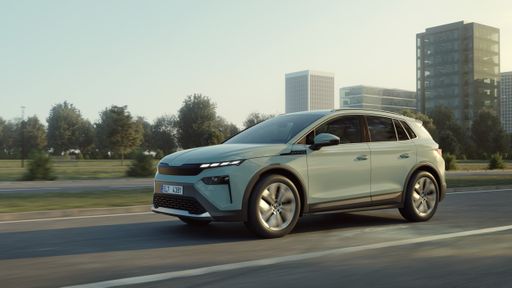 @ Škoda Auto a.s. / Škoda Storyboard
@ Škoda Auto a.s. / Škoda Storyboard
Skoda Elroq
BMW X1
The BMW X1 brings a premium feel to compact crossover life, wrapping practical space and agile handling into a tidy, upscale package. It’s ideal for buyers who want BMW driving dynamics without the bulk, offering everyday comfort and a few clever tricks to keep the commute interesting.
details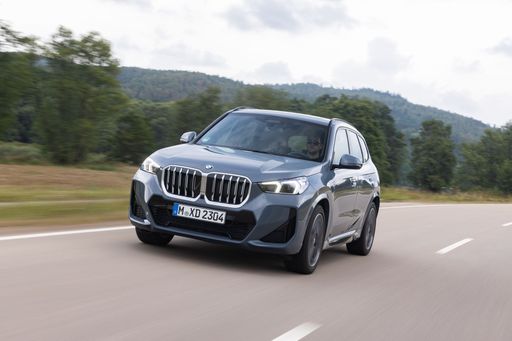 @ BMW Group Press
@ BMW Group Press
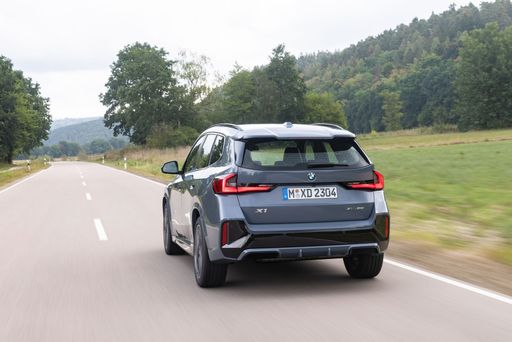 @ BMW Group Press
@ BMW Group Press
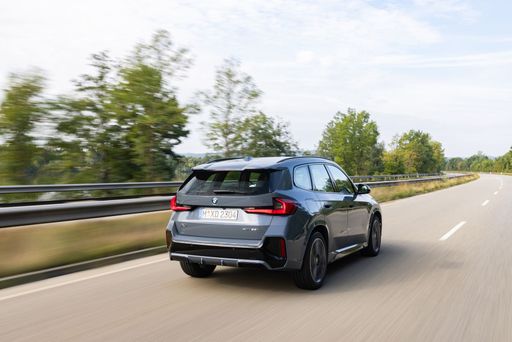 @ BMW Group Press
@ BMW Group Press
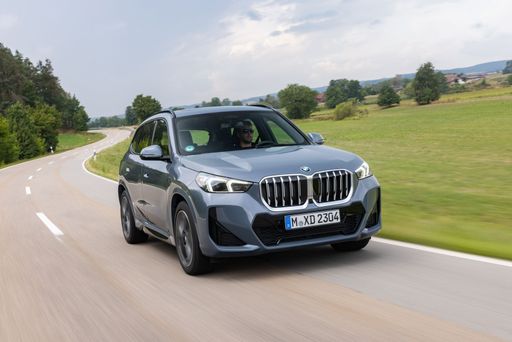 @ BMW Group Press
@ BMW Group Press
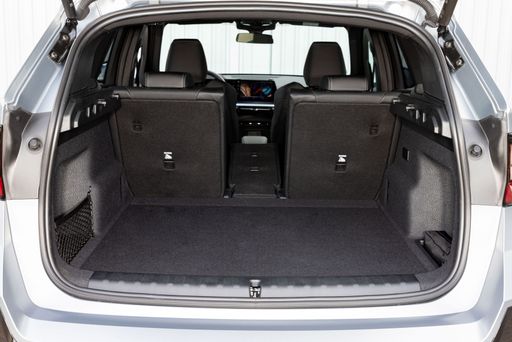 @ BMW Group Press
@ BMW Group Press
Skoda Elroq
The Skoda Elroq is a cleverly packaged family SUV that mixes roomy practicality with sharp, modern looks, making it an easy pick for buyers who prefer common sense over flash. On the road it's composed and user-friendly, with thoughtful interior details that turn everyday driving into something pleasantly efficient — a sensible companion with a wink.
details @ Škoda Auto a.s. / Škoda Storyboard
@ Škoda Auto a.s. / Škoda Storyboard
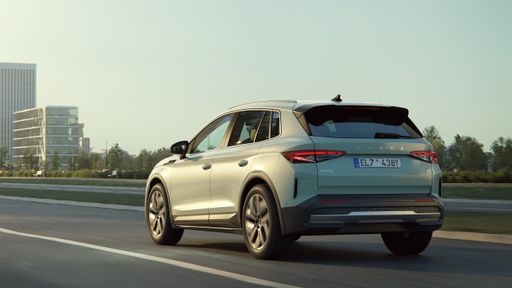 @ Škoda Auto a.s. / Škoda Storyboard
@ Škoda Auto a.s. / Škoda Storyboard
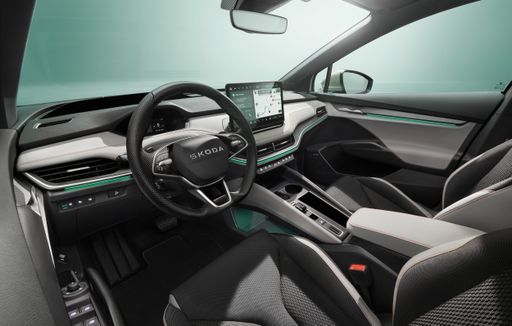 @ Škoda Auto a.s. / Škoda Storyboard
@ Škoda Auto a.s. / Škoda Storyboard
 @ BMW Group Press
@ BMW Group Press
|
 @ Škoda Auto a.s. / Škoda Storyboard
@ Škoda Auto a.s. / Škoda Storyboard
|
|
|
|
Costs and Consumption |
|
|---|---|
|
Price
38200 - 55500 £
|
Price
29100 - 45500 £
|
|
Consumption L/100km
2.5 - 7.7 L
|
Consumption L/100km
-
|
|
Consumption kWh/100km
-
|
Consumption kWh/100km
15.2 - 16.5 kWh
|
|
Electric Range
81 km
|
Electric Range
377 - 573 km
|
|
Battery Capacity
14.20 kWh
|
Battery Capacity
52 - 79 kWh
|
|
co2
57 - 175 g/km
|
co2
0 g/km
|
|
Fuel tank capacity
47 - 54 L
|
Fuel tank capacity
-
|
Dimensions and Body |
|
|---|---|
|
Body Type
SUV
|
Body Type
SUV
|
|
Seats
5
|
Seats
5
|
|
Doors
5
|
Doors
5
|
|
Curb weight
1575 - 1935 kg
|
Curb weight
1953 - 2268 kg
|
|
Trunk capacity
490 - 540 L
|
Trunk capacity
470 L
|
|
Length
4500 - 4505 mm
|
Length
4488 mm
|
|
Width
1845 mm
|
Width
1884 mm
|
|
Height
1622 - 1642 mm
|
Height
1608 - 1625 mm
|
|
Max trunk capacity
1495 - 1600 L
|
Max trunk capacity
1580 L
|
|
Payload
490 - 500 kg
|
Payload
470 - 531 kg
|
Engine and Performance |
|
|---|---|
|
Engine Type
Diesel MHEV, Petrol MHEV, Petrol, Diesel, Plugin Hybrid
|
Engine Type
Electric
|
|
Transmission
Automatic
|
Transmission
Automatic
|
|
Transmission Detail
Dual-Clutch Automatic
|
Transmission Detail
Reduction Gearbox
|
|
Drive Type
Front-Wheel Drive, All-Wheel Drive
|
Drive Type
Rear-Wheel Drive, All-Wheel Drive
|
|
Power HP
136 - 326 HP
|
Power HP
170 - 340 HP
|
|
Acceleration 0-100km/h
5.4 - 9.2 s
|
Acceleration 0-100km/h
5.4 - 9 s
|
|
Max Speed
190 - 250 km/h
|
Max Speed
160 - 180 km/h
|
|
Torque
230 - 477 Nm
|
Torque
310 - 679 Nm
|
|
Number of Cylinders
3 - 4
|
Number of Cylinders
-
|
|
Power kW
100 - 240 kW
|
Power kW
125 - 250 kW
|
|
Engine capacity
1499 - 1998 cm3
|
Engine capacity
-
|
General |
|
|---|---|
|
Model Year
2024 - 2025
|
Model Year
2025
|
|
CO2 Efficiency Class
D, E, F, B
|
CO2 Efficiency Class
A
|
|
Brand
BMW
|
Brand
Skoda
|
Is the BMW X1 offered with different drivetrains?
The BMW X1 is offered with Front-Wheel Drive or All-Wheel Drive.
The prices and data displayed are estimates based on German list prices and may vary by country. This information is not legally binding.
